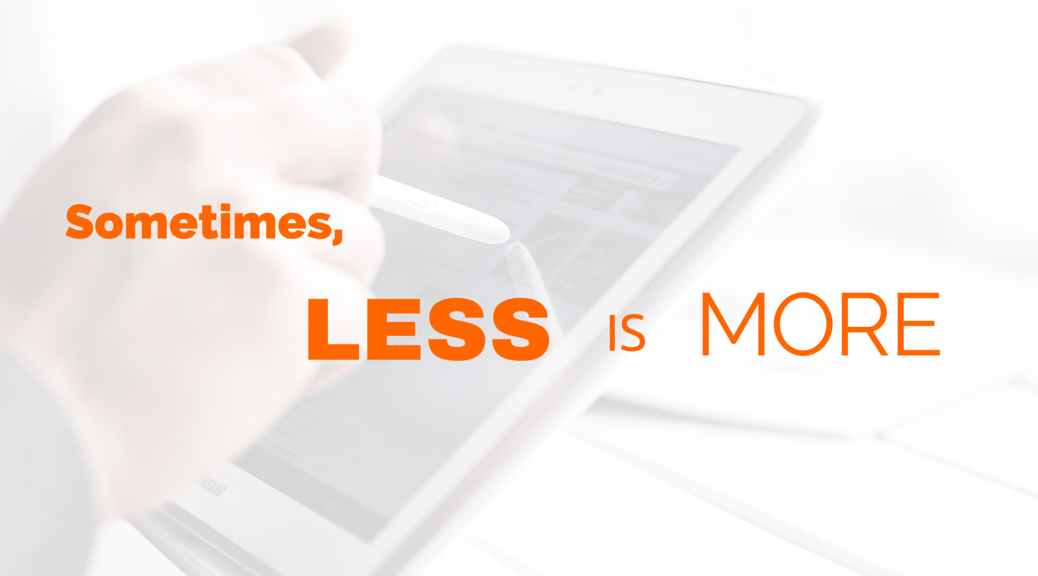On this Page
“Simplicity is the ultimate sophistication”–Leonardo da Vinci.
Be it art or a learning management system, we all crave and appreciate a clutter-free simple product, don’t we? Often, in the race to make the product feature-rich and all-encompassing, vendors overlook what the system users need. Learning systems are becoming bulkier, more complex applications than they used to be a few years ago. The vendors tend to forget that ease-of-use, accessibility and learner-centric design are still the primary factors that drive LMS adoption.
The first generation LMS software was built for the L&D teams and mostly used by administrators. We have witnessed a sharp transition from a trainer-centric design to the modern day LMS which is learner-centric and ready for the mobile-first world. Now-a-days, most learning & training systems boast about multitude of third-party integrations, complex menu structures, ever-growing configurations and setups. It can be overwhelming for a newbie to get on the LMS bandwagon!
Do we really need so many LMS features and functionalities?
Do I really need to spend so many training hours just to understand how to use the LMS?
Do we need all these Integrations offered with the LMS?
These are some serious questions with no single simple answer. But you can stay away from LMS software that makes you ask all of these questions. Let us look at some absolute must-have LMS features which can deliver you an effective and efficient learning experience, minus all the bloating and complexities.
Effortless Course Management
Any LMS must have a central repository to host all your learning material and assets like Videos, SCORM Packages, PDFs, PPTs, DOCs, reference URLs and others. With a modern user-interface, adding these assets to build courses should be a cakewalk. The LMS should permit the course developer to create course workflows quickly and customized to the training program requirements.
A Robust Assessment Engine
Assessment module is the key to evaluate the performance of your learners and to keep a check on whether your training goals are fulfilled or not. A good assessment module will have a number of options to build questions, put them in categorized question banks and add them to the training course as and when required. It should allow the trainer to set criteria for correct/wrong answers and an easy-to-configure marking or grading system.
Multiple Users – Multiple System Views
The Learning Management system should provide a clean and concise dashboard to all. People, be it educators, learners or team managers, should have a clutter-free view of their respective modules within the system. The LMS should have a configurable user-permission matrix to allow that. Every learner should be able to access his/her course with minimum number of clicks. Similarly, every team manager should be able to view his team’s progress within a single screen view.
Performance Tracking
The LMS should track & report training program progress and individual performances. It should offer a bird’s-eye view of the training activity. This gives the trainer an insight into course completion rates, learner progress, top performing learners and much more. Drill down reports to view course-level, learner-level or team-level details are essential.
Taking into account today’s tech-savvy learners, you should also consider an LMS which offers you anytime, anywhere access to courses on all sorts of devices be it smartphones, tablets or laptops. Mobile LMS can be carried on or off the workplace, providing complete flexibility to access course material on the go. Due to this very reason, mobile LMS have significantly better course sign-up rate and also help immensely in knowledge retention.
A thorough training requirement analysis and focus on your learner’s needs is paramount. The quality of all these essential LMS features should carry maximum weight during the LMS selection process. If you are looking to transition away from a complex, legacy Learning Management System and go for a trimmed down version, the core features listed above can help you immensely in zeroing on the right LMS for your needs. Such an LMS will in return deliver you better ROI and cut down unnecessary costs incurred on impractical features and end-user training. A quality over quantity approach in buying a modern LMS will prove worthy of your investments in the long run. Sometimes, less is more!
